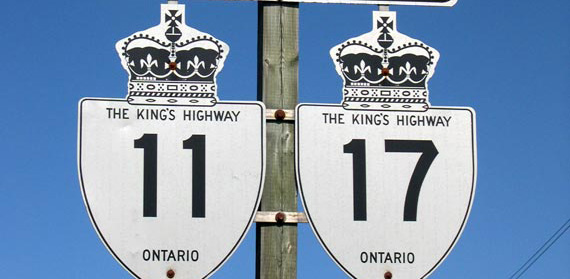Highway safety still an issue in Northern Ontario: OTA
Nearly 96% of truckers who drive and operate on Highways 11 and 17 believe highway safety and infrastructure conditions in Northern Ontario are deteriorating, the Ontario Trucking Association (OTA) found in its survey, launched following the raising of concerns by the carrier and truck driver community.

About 680 drivers participated in the survey, identifying existing issues and potential solutions.
More than 84% of respondents listed unsafe passing by other vehicles as their number one concern, closely followed by lack of truck rest areas and poorly trained truck drivers. The top five issues also included the lack of safe passing areas for trucks and unsafe trucking fleets, reported by 79.84% and 65.12% of survey participants respectively.
Potential solutions
To address the persisting problems, more than 78% of truck drivers suggest more truck passing and climbing lanes are necessary, along with the need for better-trained drivers with whom to share the road.
More than 70% agreed that more oversight of unsafe trucking fleets would help as well.
And while nearly 60% of respondents expressed the need for more heated washroom access, nearly 80% said that more truck rest areas are needed in the region.
Further collaboration
OTA has gathered the observations and anecdotes from this survey, sharing a report the with provincial and municipal government officials and stakeholders, aiming to create a short- and long-term solutions to address the issues identified by industry and truck drivers.
While the organization recognizes the efforts the government has already taken to address some of the issues outlined in the survey, the OTA chairman James Steed says more can be done to improve the highway conditions, commercial vehicle enforcement, driver training and licensing standards through further collaboration and analysis of the survey data.
Have your say
This is a moderated forum. Comments will no longer be published unless they are accompanied by a first and last name and a verifiable email address. (Today's Trucking will not publish or share the email address.) Profane language and content deemed to be libelous, racist, or threatening in nature will not be published under any circumstances.
Raymond, I believe you are right on, the root cause of the abysmal driving we see out on the roads is education, driving schools, all of them, cars and trucks. Sure drivers are given instruction on how to pass a test, but no instruction on courtesy, consideration, etiquette, etc. Some issues I see that need to addressed.. tailgaiting, driving way too close, way too fast, (everyone drives like they are on a Nascar track).. all lights on, on all vehicles, at ALL times.. never drive any vehicle into any parking spot nose first, always back in.
Signal lights on before brake lights.. and yes, get rid of the phone, tablet etc, while driving.. concentrate and pay attention to the task at hand, driving your vehicle safely and with consideration for other road users.
And we need more scrutiny and enforcement on the roads to identify and penalize the excessive speeders, aggressive and unsafe drivers.. we almost never see law enforcement out on the roads anymore, anywhere.. it’s basically a free for all.
Unfortunately the title of the article says it all: “Highway safety still an issue in Northern Ontario” ….it’s redundant we all have been aware of that. Further more, they don’t mention the other most dangerous issue which is driver distraction. All drivers not just Truck Drivers are not focused on their driving but more preoccupied with their smartphones. Drivers seemed to be discreet holding and looking at their smartphones while driving and now they use them openly for all to see. There is nothing more dangerous than a distracted driver truck or car/pick up holding a smartphone, driving aggressively, feeling entitled in good or bad weather.As for lack of driver training and shady trucking schools, I believe it’s all by design: loaded trailers sitting in yards have to move at all cost.